 Years ago when I worked for the Beautiful Oceans Academy, I was introduced to a lot of high profile conservationists. Captain Paul Watson of Sea Shepherd, Phillipe Cousteau of Earth Eco, Stan Waterman (famous in certain diving circles and star of Blue Water, White Death) and many others. Most of them were not fans of the marine aquarium hobby/industry, and were highly skeptical of parks that kept marine mammals. Beautiful Oceans worked alongside various diving industry conservation groups to help generate content for its courses, which inspired divers to take part in oceanic conservation. We took that material to resorts all over the Caribbean and combined marine science with recreational diving, with the supreme goal of helping foster conservation. In everything I do in marine aquaria, I try to factor conservation into the equation. Whether it be ensuring animals survive and thrive in my systems, on down to managing my aquarium so it leaves as light a footprint as possible on the environment.
Years ago when I worked for the Beautiful Oceans Academy, I was introduced to a lot of high profile conservationists. Captain Paul Watson of Sea Shepherd, Phillipe Cousteau of Earth Eco, Stan Waterman (famous in certain diving circles and star of Blue Water, White Death) and many others. Most of them were not fans of the marine aquarium hobby/industry, and were highly skeptical of parks that kept marine mammals. Beautiful Oceans worked alongside various diving industry conservation groups to help generate content for its courses, which inspired divers to take part in oceanic conservation. We took that material to resorts all over the Caribbean and combined marine science with recreational diving, with the supreme goal of helping foster conservation. In everything I do in marine aquaria, I try to factor conservation into the equation. Whether it be ensuring animals survive and thrive in my systems, on down to managing my aquarium so it leaves as light a footprint as possible on the environment.
Like many in the conservation circles I watched the hit documentary film Blackfish. It was eye opening, but didn’t expose anything I didn’t already know. Killer whales are intelligent, social and complex animals, and when placed in a captive setting they are often unable to adjust, lashing out and sometimes people get caught in the middle. This is the same for aquarium fish, watch an Achilles tang struggling to adjust to captive life, in a tank far too small to support it. The fish will pace back and forth, up and down, refuse to eat and often eventually perish. The only major difference is if an Achilles tang tail swipes an aquarist, it doesn’t crush their body and kill them. Captivity creates a lot of ethical conservation concerns and when keeping animals in captivity turns into a highly profitable industry, as is the case with marine aquariums and attractions such as Sea World, those concerns are compounded. Captivity also brings with it a great capacity for humans to learn about different species. It’s hard to deny that Sea World’s work with killer whales has greatly progressed our understanding of them. Now that California has banned Sea World from breeding killer whales in captivity, could the conservation based law backfire?
Sea World’s Research:
While Blackfish highlighted many questionable programs hosted by Sea World (such as separating killer whale calves from their mothers) it failed to shine any light on research initiatives carried out by the marine animal park. Five decades ago, Sea World’s founders made conservation and animal research a key component of their wildlife park. Sea World publishes both its own research and supports research projects all over the world, opening their parks up to scientists who require a controlled environment for animal study.
Both Sea World’s research teams and outside researchers have commented that the park provides them an opportunity to better understand marine animals. In addition, Sea World has consistently provided direct support and funding to research operations in the field, including grants from the Sea World and Busch Gardens Conservation Fund.
Sea World’s animal health team of scientists have contributed more than 300 published studies that advanced the global scientific communities understanding of marine animals.
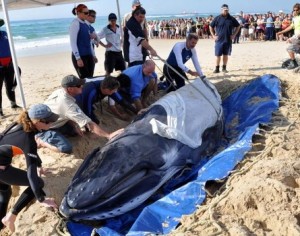
GOLD COAST, AUSTRALIA – AUGUST 8: In this handout photo provided by SeaWorld Australia, volunteer rescuers prepare to drag a beached humpback calf to sea at Surfers Paradise Beach on August 8, 2011 on the Gold Coast, Australia. The humpback calf was stranded on the beach yesterday for hours before volunteer rescuers were able to drag it back to the sea. SeaWorld Australia says a mother and calf humpback were sighted near where the calf was released and are hoping to get photos to verify it is the same calf and that it has been reunited with it’s mother. (Photo by 2011 SeaWorld Australia via Getty Images)
Right now Sea World has allied with the National Fish and Wildlife Foundation for a Killer Whale Research and Conservation Program. It’s a 10 million dollar research and conservation pledge for wild killer whales, the largest of its kind. The program will focus on three key goals: increasing prey availability for wild killer whales, improving whale habitat quality and strengthening existing management with critical research.
Where the California law could backfire.
Sea World is known to have a thriving breeding program resulting in captive born killer whales. Sea World’s breeding programs extend to dolphins, sea lions and several other marine species. According to Sea World’s official website, over 80 percent of the animals in their parks were born in captivity. These births have aided scientists in studying animal growth rates, in a manner that would be impossible without captive breeding programs. Sea World’s reproductive physiologists seek out state of the art technologies that can be used in wildlife species management and conservation. It was Sea World that first developed an artificial insemination procedure for bottlenose dolphins, pacific white-sided dolphins along with beluga and killer whales.
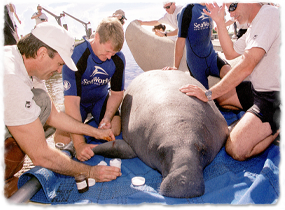 The ban in California is wrapped up to look like a progressive step in shutting down Sea World’s abusive practices, but the questions begs to be asked, is it really abuse. Let’s imagine for a second that Sea World never existed, that the 300 published studies done by in house Sea World scientists or researchers working under a Sea World grant, had never been written. What if our knowledge of dolphin and whale reproductive physiology was still in its infancy? Sea World’s research centers have also been imperative in learning how to aid marine animals that fall victim to oil spills, and other human-caused and natural disasters. What if all that research simply didn’t exist?
The ban in California is wrapped up to look like a progressive step in shutting down Sea World’s abusive practices, but the questions begs to be asked, is it really abuse. Let’s imagine for a second that Sea World never existed, that the 300 published studies done by in house Sea World scientists or researchers working under a Sea World grant, had never been written. What if our knowledge of dolphin and whale reproductive physiology was still in its infancy? Sea World’s research centers have also been imperative in learning how to aid marine animals that fall victim to oil spills, and other human-caused and natural disasters. What if all that research simply didn’t exist?
In reef aquaria, having captive marine ecosystems in our homes has led to major progress in understanding reef animals. Much of the progress that has been made in reef aquaria has translated to active conservation programs, such as The Coral Reef Restoration Foundation in the Florida Keys. That said, this progress that can help rebuild wild reefs certainly doesn’t outweigh the damage being done to the ocean by climate change, and other human-related oceanic crisis. Can it be said that Sea World’s practices, environmentally, with killer whales outweigh in damage the good that their research programs have produced? If just 25% of advanced aquarists published over 300 scientific papers on coral reefs, and allowed scientists from all over the world to study their aquariums, reef aquaria may be viewed quite differently in the public eye. It could be argued that if every public aquarium had the investment to research initiatives that Sea World has, our knowledge of oceanic animals might be much better. Is it more justifiable for one individual to keep a massive (1,000-30,000) reef aquarium for their own personal enjoyment, or a private park to keep marine mammals while actively researching their behavior, and seeking ways to save their wild counterparts?
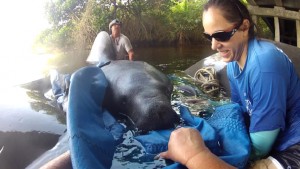 Is Sea World advancing our knowledge of precious marine mammals, while also contributing to programs aimed at preserving them? If Sea World can no longer breed marine mammals in California, and this legislation flows into other states, how can the foundations further invest in understanding the reproductive behaviors of the marine animals they keep. Even worse, could such legislation prevent an organization like Sea World from taking part in helping boost populations of wild marine mammals? If it’s illegal for them to breed killer whales then progress in its entirety is halted and a generation of advances are suddenly stalled.
Is Sea World advancing our knowledge of precious marine mammals, while also contributing to programs aimed at preserving them? If Sea World can no longer breed marine mammals in California, and this legislation flows into other states, how can the foundations further invest in understanding the reproductive behaviors of the marine animals they keep. Even worse, could such legislation prevent an organization like Sea World from taking part in helping boost populations of wild marine mammals? If it’s illegal for them to breed killer whales then progress in its entirety is halted and a generation of advances are suddenly stalled.
Sea World’s Rising Tide conservation initiative:
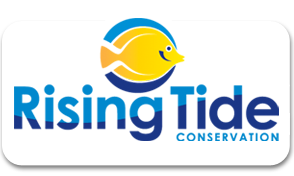 It may be surprising to some aquarists that Sea World has proposed perhaps the best measure to conserve marine fish where the aquarium industry is concerned. Sea World noted that many aquarium fish are collected in ways that are detrimental to the health of individual species, along with coral reef ecosystems. They also acknowledged that the public demand for marine species is growing, not shrinking. What Rising Tide proposes is not limiting the species available to marine aquarists, but making major strides in captive breeding programs for ornamental marine fish. Rising Tide promotes commercial production of marine fish as a viable alternative to wild collection and has grown into a nationwide effort with various sponsors, including Sea World’s own conservation fund.
It may be surprising to some aquarists that Sea World has proposed perhaps the best measure to conserve marine fish where the aquarium industry is concerned. Sea World noted that many aquarium fish are collected in ways that are detrimental to the health of individual species, along with coral reef ecosystems. They also acknowledged that the public demand for marine species is growing, not shrinking. What Rising Tide proposes is not limiting the species available to marine aquarists, but making major strides in captive breeding programs for ornamental marine fish. Rising Tide promotes commercial production of marine fish as a viable alternative to wild collection and has grown into a nationwide effort with various sponsors, including Sea World’s own conservation fund.
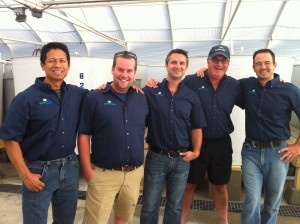 Rising Tide’s board of advisors is made up of environmentalists, professional aquarists and leaders in the marine aquarium industry. Display aquariums throughout the country have collected fish eggs from their systems to support the program, which since 2009 has already developed captive rearing techniques for 10 marine species. Within the next 15 years it’s plausible that Rising Tide could unlock the secret to breeding dozens of species, greatly reducing the collection burden on wild reef fish. Perhaps sometime in the future, a marine aquarium hobby could exist that doesn’t collect a single specimen from the wild, largely due to the work of Rising Tide. Is this type of venture really the scheme of some organization solely concerned with making animals perform tricks, and collecting consumer dollars? If Sea World’s concerns were only for making money, why would they donate millions of dollars to conservation initiatives, while employing teams of scientists to study the plight of marine mammals?
Rising Tide’s board of advisors is made up of environmentalists, professional aquarists and leaders in the marine aquarium industry. Display aquariums throughout the country have collected fish eggs from their systems to support the program, which since 2009 has already developed captive rearing techniques for 10 marine species. Within the next 15 years it’s plausible that Rising Tide could unlock the secret to breeding dozens of species, greatly reducing the collection burden on wild reef fish. Perhaps sometime in the future, a marine aquarium hobby could exist that doesn’t collect a single specimen from the wild, largely due to the work of Rising Tide. Is this type of venture really the scheme of some organization solely concerned with making animals perform tricks, and collecting consumer dollars? If Sea World’s concerns were only for making money, why would they donate millions of dollars to conservation initiatives, while employing teams of scientists to study the plight of marine mammals?
Final Thoughts:
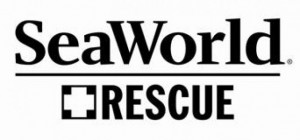 Sea World and marine mammals in captivity has always been an emotional issue. Over the years people like Rick O’ Barry (star of the TV series Flipper, turned dolphin conservationist) have had serious changes of heart regarding the plight of captive marine mammals. Human/dolphin interaction ranges from the abusive to the bizarre, with researchers claiming they fell in love with their aquatic charges, even forming sexual relationships. Science has shown us that whales and dolphins are highly intelligence, with some experts arguing their intelligence could rival that of human beings. They have distinct personalities and form complex social relationships. Emotionally, they are a lot like us, capable of a wide range of feelings.
Sea World and marine mammals in captivity has always been an emotional issue. Over the years people like Rick O’ Barry (star of the TV series Flipper, turned dolphin conservationist) have had serious changes of heart regarding the plight of captive marine mammals. Human/dolphin interaction ranges from the abusive to the bizarre, with researchers claiming they fell in love with their aquatic charges, even forming sexual relationships. Science has shown us that whales and dolphins are highly intelligence, with some experts arguing their intelligence could rival that of human beings. They have distinct personalities and form complex social relationships. Emotionally, they are a lot like us, capable of a wide range of feelings.
It seems unethical and unjust to take something so wild, free and intelligent; cram them into pools and make them perform tricks for human observers. To turn such a practice into an industry that garnishes millions if not billions of dollars may place profits before the feelings of living animals. Though when looking at the pharmaceutical industry, medical industry, zoos, the pet industry and other American corporations, one could argue that such is the American way.
As is the case with public aquariums, what if such a process can open up a treasure trove of research while helping the public at large appreciate and fall in love with something they would otherwise be ignorant too? Does Sea World’s research and wild conservation initiatives redeem the original sin of marine mammal captivity? Or do all marine parks need to be highly regulated, even shut down and their charges set free (even though it’s unlikely captive bred animals would survive in the open sea)? In my view the pendulum swings both ways, and a lot is determined by individual facilities, their goals and the people at the helm. The state of California has sent a powerful message about how they feel regarding marine mammal parks, I just hope that decision doesn’t backfire.











Nice to see an article give both points of view after Blackfish. People don’t realize the amount of good Sea World has done.
I love seaworld!